Acrylic Pointillism, Oil & Coldwax, Mixed Media Original & Custom Fine Art for Your Meditation, Office or Living Spaces - Shop Online or Email for More Information
T (760) 880-8725
Email: studio@craigallenlawver.art
Craig Allen Lawver
16-566 Keaau-Pahoa Rd #188-205 Keaau, Hawaii 96749
JOURNAL : Entry
Fish & Art : The Universe Below
Thoughts & Notes
On the subjects I paint
Journal Entry: Fish in Art : The Universe Below
An Exploration of a Brilliantly Colored, Aquatic Rainbow
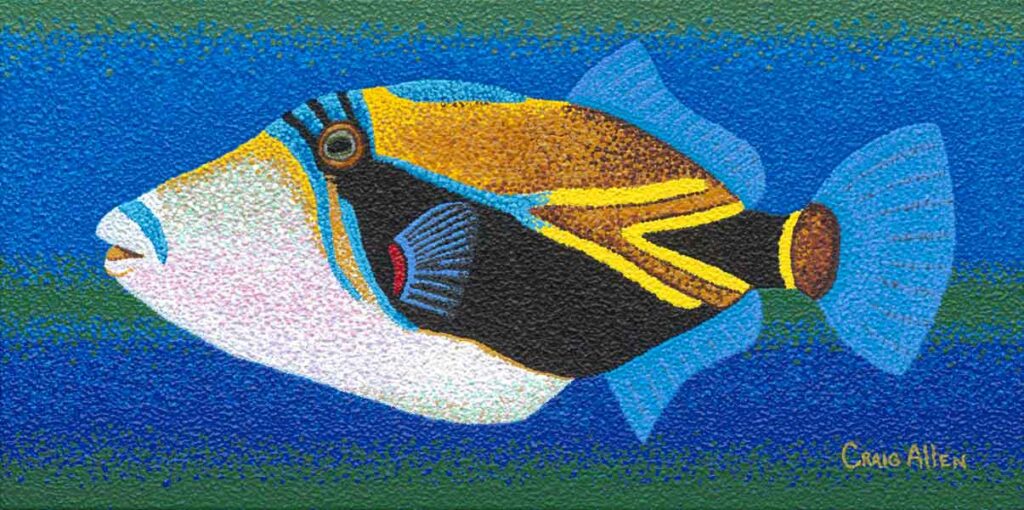
“And the lord spoke to the fish, and it vomited out Jonah upon dry land.”
Humuhumunukunukuapua’a
A Beginning …
The Hydrosphere
This Journal Entry: Fish in Art was written to celebrate the fish. A living, aquatic rainbow, fish are often vibrantly colored and fantastically patterned. With 30,000-plus species they provide more than enough subject material for any artist’s portfolio.
Fish inhabit the hydrosphere (the earth’s waters). What at first may appear limiting is in actuality, the opposite. Water covers 71% of the Earth’s surface and the oceans hold over 96% of all the Earth’s water in their depths.
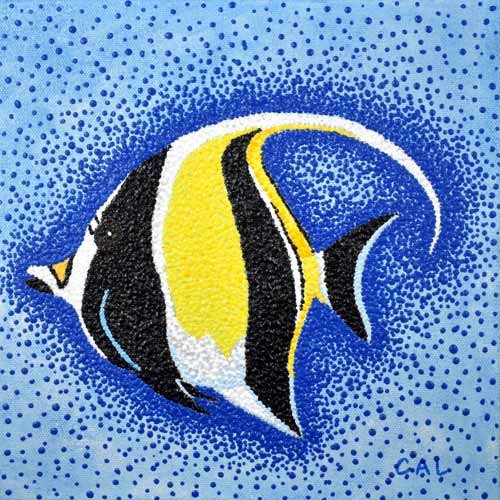
Moorish Idol
The hydrosphere is a single part of a vast planetary system. A sub-unit in the Ecosphere – the worldwide sum of all the different ecosystems – it is the zone of life on Earth.
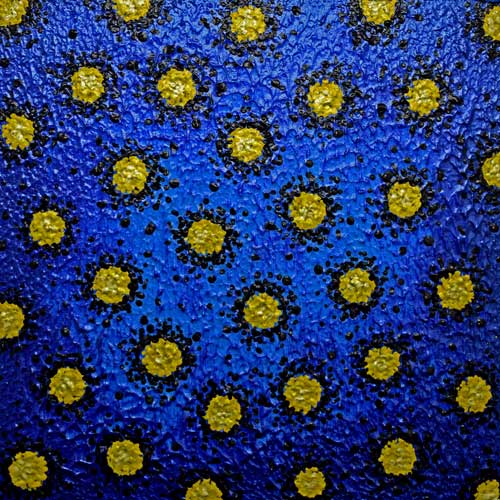
This system, integrates all living beings and and their interconnected relationships. This integration, includes any interactions with the elements of the lithosphere (earth’s crust), cryosphere (frozen water), hydrosphere (water), and the atmosphere (air).
Cell: Blue with Yellow
Life Aquatic
A Living Rainbow
Fish are aquatic, craniate, gill-bearing animals that lack limbs with digits. This means, they have a skull, breathe water, and have no arms with fingers.
Fish are classified as vertebrates (lifeforms with backbones). They fall specifically in the phylum (level of classification) Chordata.

I became enchanted with fish when I was young. In front of the livingroom aquarium for hours, I studied their tireless actions, shapes and colors.
Clone: Purple
The Chordates as a whole, include vertebrates and invertebrates (no backbone) that have a notochord (skeletal rod supporting the body in embryonic and some adult chordate animals).
The Chordates form a sister group with the tunicates (marine invertebrates), and together form the olfactores (lifeforms with a respiratory system). Included in this broad sweep of families, are the Hagfish and lamprey.
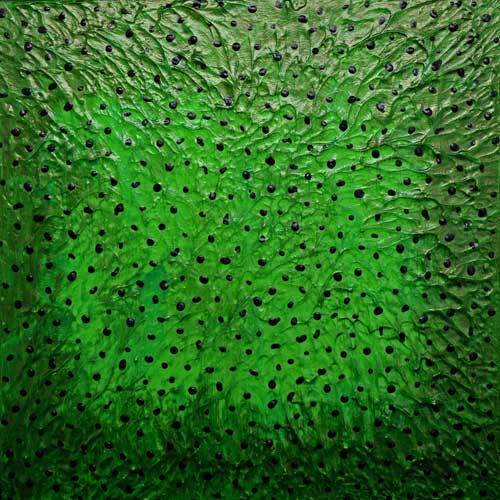
Clone: Green
No early experiences, at home in front of the aquarium or away at a nearby lake, prepared me for seeing fish in all their splendor. It is an amazing experience that luckily I can enjoy living here in Hawaii.
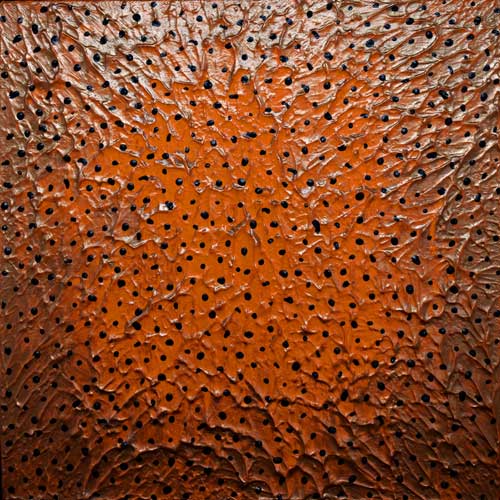
Brilliantly colored and hypnotically patterned, fish are a visual feast.
Clone: Orange
I see some of the same feelings I first experienced on the faces of excited travelers at Two Step Beach at Honaunau Bay, on the Big Island of Hawaii. It is one of my favorite places to take out of town guests.
I often imagined life among creatures like these in the depths of the oceans or lakes near my home.

Bandit Angelfish
From Jacques Cousteau …
To the Sea Devil
When young I wanted to live among the fish of the waters. At least, what I imagined those mysterious creatures to be. I longed to be able to breathe oxygen from the water. I dreamed of the day science might make that possible.

I fantasized I could swim like Aquaman, the ultimate denizen of the deep. King of the seas, he ruled a mysterious world. This master of the underwater realm possessed the power to communicate with the very lifeforms I found so fascinating.
Brightness Lies Within
Many of my fantasies were fed more by pop-culture consumption more than any known facts. I was in front of the television anytime a Jacques Cousteau special was set to air.
I intently studied the pictures and illustrations in books of the many ocean creatures I hoped to see. Anything that had to do with the ocean instantly had my attention.
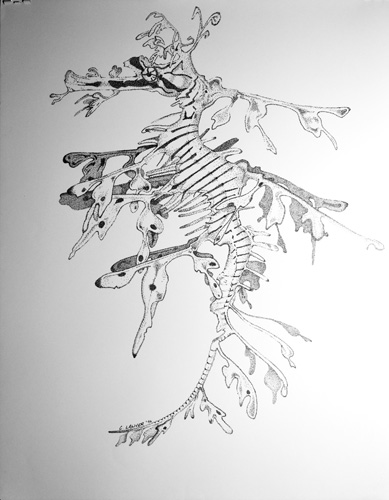
Leafy Seahorse
I intently studied the pictures and illustrations in books of the many ocean creatures I hoped to see. Anything that had to do with the ocean instantly had my attention. I dreamed of being a marine biologist or oceanographer.
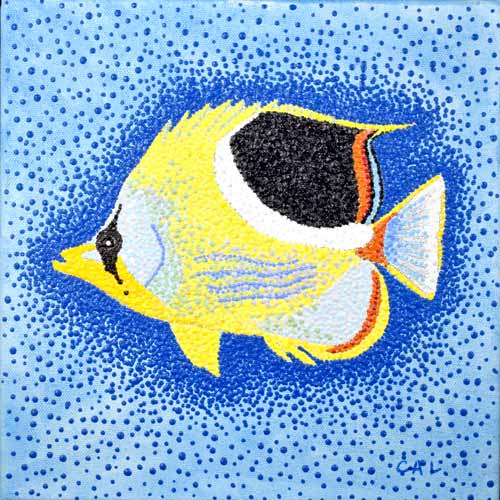
In the creating of art, I often get to revisit old memories. Writing this Journal Entry: Fish in Art gives me some space to think on paper about my early experiences, and how those experiences influenced me as an artist.
Saddleback Butterflyfish
The Universe Below
A Dark & Fearful World
As a boy, I was fascinated by the monsters thought to live in the ocean’s depths. The human mind has painted some fearful pictures and I was as enraptured of these, as I was of anything else.
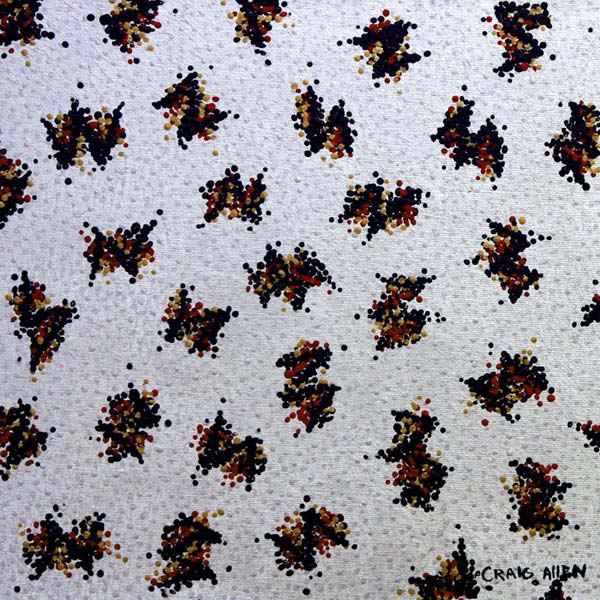
Godzilla aside, there are indeed fish that are more fearsome than imagined monsters.
Evolving 8
Every list of terrifying creatures, should include the Seadevil. This fish is was first discovered in the 1830’s. It is easy to comprehend terror when you see an animal like this fish.
The Seadevil is a predatory monster from the depths custom designed for art and literature. Jules Verne needn’t have looked far from fact for his fantasy.
Ancient mariners feared sailing off the edge of the world and what they imagined lurked, in the dark depths.
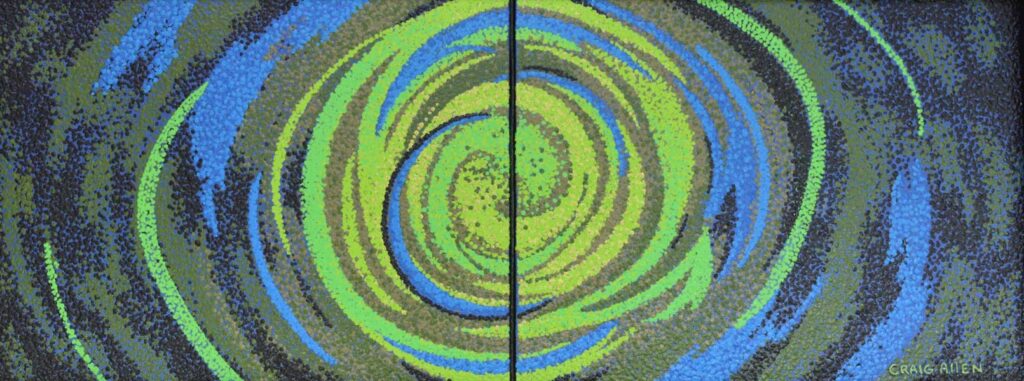
As Above So Below
“What these creatures had in common, aside from their fierce visages, were ugly threads and projections around their mouths. The animals were fish that fished. The tips of these fleshy projections glowed to lure victims. Today the creatures are known as Anglers. The living lights, dangled near gapping jaws, tempt unsuspecting prey into teeth that are extraordinarily long and sharp. The bizarre fish live down to depths of nearly two miles and can grow in length to three of four feet… their heads are huge. Their repulsiveness, at least to some humans, is suggested by a few of the common names bestowed upon them over the years – Blackdevil, Blacktail, Netdevil, Triplewart, Seadevil. The body of the latter fish is covered with warts and spines and furrows, and its large mouth is turned down in a perpetual frown. Today, Anglers are virtual icons of the deep.”
– William J. Broad: The Universe Below
Creature from a Black Lagoon
And Other Monsters from the Deep

Growing up, I was a huge fan of any monster movie that featured a creature from the dark depths.
Hammerhead
I fantasized, that one day I would swim the length of the mighty Amazon River. Hopefully to discover my own ‘Creature from the Black Lagoon‘.

‘The Creature from a Black Lagoon’ set my imagination aflame. The Amazon River and its immense surrounding jungle beckoned to be explored.
12 Fish Installation
I love a great monster movie, although my expectations are now more tempered by reality. Some of these films are surprisingly good, but most are disappointing. A few of my favorite sci-fi ‘monster’ movies are ‘The Abyss‘, ‘Leviathan‘, ‘The Lighthouse‘, and ‘The Shape of Water.’
Bonneville Dam
The Destruction of Spawning Grounds
I find watching fish swim in rivers an amazing sight, but the experience has changed. At times it can be painful to see all the damage being done and hidden from sight. Clear-cut forests, erosion, development all add up to extreme habitat destruction

My art is a challenge to the mindest that knows no bounds. It is a celebration of our planet’s many lifeforms and the places they live.
Mount Hood from Paradise Park Trail, Oregon
The Bonneville Dam on the Columbia River is a great place to visit. It is, as well, a sobering sight. Any visit should begin at the fish ladder in place at the dam on the Oregon side of the river.
To visit the Bonneville Dam is to be confronted by environmental challenges, habitat degradation and the genius of engineering.

Blue Log & Bear-grass
A fish ladder is designed to provide a series of ‘steps’ that salmon can ‘climb’ as they swim upstream to spawning grounds. It is fascinating to watch salmon, trout, lampreys, and sturgeon, the woolly mammoth of all fish, move past the dam’s viewing window.
Salmon
The difficulty faced by salmon in the web of life is compounded by the dams humans build. These fish are genetically programed to return to the waters where they are born.

The driving instinct of salmon is encoded in their DNA. As an artist, I am in search of those ways society and culture have imprinted on me. I explore in art and writing, how those influencers have shaped my work and ways of thinking.
Monet’s Pond
The water and river where a salmon is born is imprinted on them. I think of how a baby bird imprints on its parents. A salmon can’t be born in one river or tributary and be returned to another, much like a fallen hatchling can’t be returned to the next.
Just like many other complicated ecosystems, once a salmon spawning ground has been destroyed, we lack the means to fix the problem. In order to replenish river fish stock, scientists have tried using captive breeding programs and failed.
As I write this Journal Entry: Fish in Art, I feel a dark dread threathening to over take me. Does it seem to late to you, for all of us to somehow, save the enironment?

Turning
Tragically, no river is what it once was, neither are the fish populations. The best remaining salmon runs are in Alaska and these are threatened by resource extraction.

An aquatic rainbow of brilliant colors, fish present me with a place of novel new encounters and painterly expression.
Flame Angelfish
It is a Fish Eat Fish …
Existence in the Natural World
Spellbound, that living room aquarium was one of my great joys. The movements of the tank’s fish, separated from my world by a thin wall of glass, was incredibly educational.
I was excited when one of the fish in our tank give birth to live young. I place the expectant mother in a specialized container to protect her young fry.

Tadpoles
I was dismayed and outraged when another tank inhabitant jumped out of the water and into the birthing chamber. Dinner time for the invader, I learned then, we live in a ‘fish eat fish’ kind of world.
Fin, Fossil & Forest
An Intricately Connected System
Fish have completely and efficiently occupied the waters of the Earth since their origin. The bony fish I watched as a boy? They are the most successful of the vertebrates. Additionally, they are an integral part of the world’s food chain.

There is irrefutable evidence that we have drastically depleted the fishing grounds of the world. And the consequences of this depletion, and damage to the oceans and waters of the planet have implications reaching beyond the dinner plate.
Clone: Red
To illustrate, look again, at the salmon for a brief lesson in ecological science. A healthy fish population provides food, not just for us, but to many other species and lifeforms. And those dying fish along the riverbanks?
Ultimately dying fish provide an incredible source of natural fertilizer for surrounding forests. In turn, the forest then provides shade for the river.
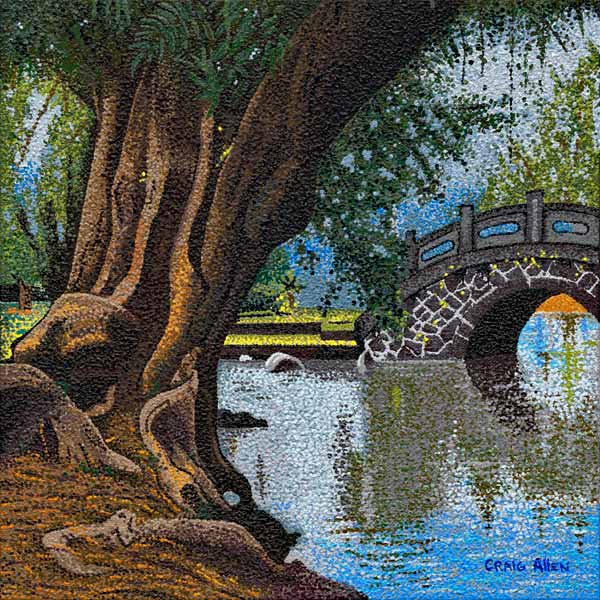
Reflections in the Queen’s Garden
The shade provided by forests and trees helps maintain the proper temperature required for the spawning, hatching and growth of the fish.

The ecological system that supports life is a vast puzzle, millions of years in the making, We are beginning to loose the pieces.
Acrylic Abstract #1
In the evolutionary history of the vertebrate, the jawless fish were the first to appear. Coming onto the scene over 470 million years ago, they existed as the only member of the group for over 100 million years. They were the first stage in the evolution of the fish we know today. Gills developed into jaws. Skin turned into teeth. More efficient fins evolved improving the fish’s ability to avoid predators and hunt for food. They evolved to a point where they were able to defend themselves and became proficient predators.
Extinction has taken many more animals than exist in the world today. It is part of an ongoing ecological process on planet Earth. Arguably, it is a part of a even larger universal system. A law of time and nature with no exceptions.
Lampreys and Hagfish are the surviving members of an ancient lineage. They survive as parasite and scavenger and have few competitors.

These ancient fish share the world with other creatures more dinosaur than fish; the Coelacanth, lungfish and the sturgeon.
Fossil Fish # 1
The sturgeon is referred to as a primitive fish because their morphological characteristics have remained relatively unchanged since the earliest fossil record. Time will tell, whether we as a species will survive as they have, or will we become just more bones in the rock, mud and dust?
Built for Power & Speed
The Tuna: A King in the Seas
Adaptive changes through the process of natural selection has given modern fish the tools they needed to outcompete their jawless ancestors. Fish, like the Bluefin Tuna, developed in extrodinary ways.
Adaptive changes have made tuna the true king of the seas. They are powerful and perfectly constructed for the world they inhabit.
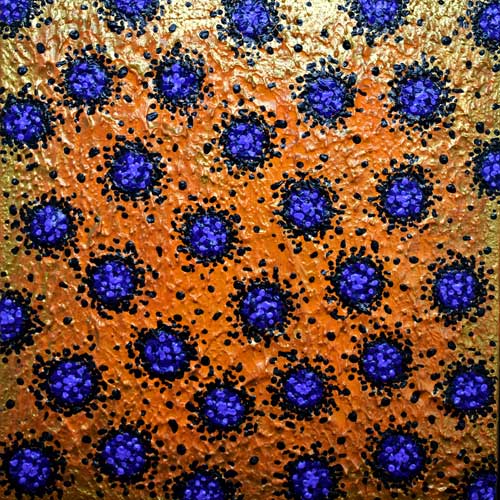
Cell: Orange with Purple
“What allows a tuna to generate such dangerously explosive thrust, merely by wagging its tail, is a package of natural adaptations that exquisitely integrate specialized muscles, specialized circulation, and specialized external design. Making the Bluefin so unbelievable tough is a body thoroughly designed to penetrate cold, food rich waters and rule as top predator there; its muscles function more effectively in cold water than those of any other fish. Of more than thirty-thousand fish species plying the worlds waters, the bluefin is among the few that have developed the ultimate weapon of the vertebrate: heat…. A bluefin ranging from Canada to the Bahamas during its annual migrations, in water temperatures spanning 45 to 86 degrees Fahrenheit maintains its body heat around 80 to 90 degrees.”
– Carl Safina: Song for the Blue Ocean
Snorkel Hawai’i
To paint a fish is to paint an extraordinarily complex lifeform. These jewels of the waters, are incredibly diverse in form and color. For this reason, I often find myself reaching for my brightest, most beautiful pigments.

Overlapping plates in rainbow hues of brilliant color, pattern and design provide bodily protection to the fish.
Tinker Butterflyfish
The contrasts of color and pattern are endless in fish. The sheer beauty of fish is enough to draw the eye of any artist. I exist, not alone in my admiration. Fish are a huge attraction to the millions of tourists who flock to the waters and shores of the Hawaiian Islands.
But what do all these visitors to Hawaii see? I wonder, do they look beyond the brightly colored hues of the multitude below the surface?
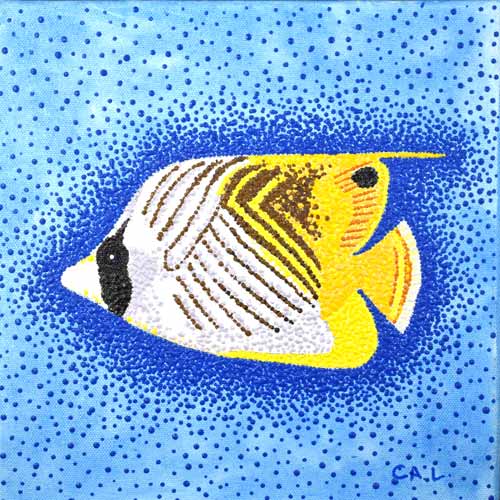
Threadfin Butterflyfish
Do they look at the physical structure of the animal itself? At the developed lateral lines that allow fish to detect changes in water pressure? This structure is key in their ability to detect prey, predator and other objects.
Fish are very aware of us. They perceive and respond to changes in water pressure, temperature, light and sound.
Respect & Care for What You See
The bays, waters and reef system around the Hawaiian Islands team with life. It is a vast and intricately connected biosphere.

The vacationing snorkeler’s amazement is understandable.
Flame Anglefish
The life, fish, and corals in the surrounding ocean are an incredible and important part of a complex ecosystem. But it is also a system that is fragile and easily damaged. That damage is clearly visible and some of it is easily avoidable.
Visitors to the islands slather on the sunscreen before diving in to see the life they have traveled so far to experience. Researchers have found that just a small amount of sunscreen containing the ingredient oxybenzone is enough to break coral down. As a result coral looses its nutrients, turns ghostly white and often dies. According to the National Park Service, between 4,000 – 6,000 tons of sunscreen enter reef areas annually.
The Fish of Hawai’i
A Few of My Favorites
The numbers of fish in the waters of Hawaii indeed seem vast. And largely they seem, in most places to be unthreatened by all the human activity.
Drifting about the reef, they are incredibly entertaining to watch as they go about their business of survival.
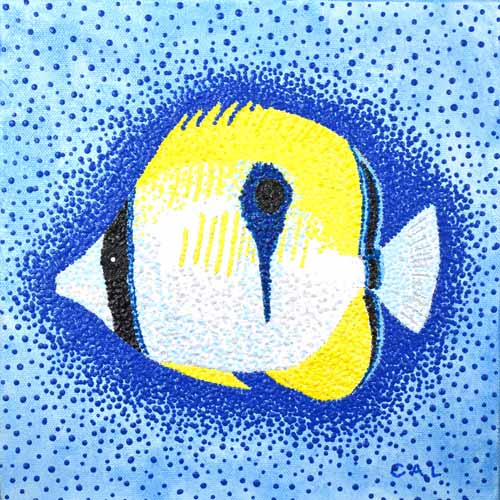
Teardrop Butterflyfish
There are numerous guidebooks available for those interested in knowing what they are looking at. Butterfly Fish, Angel Fish, Moorish Idols, Surgeonfishes, Damselfishes are all beautiful.
Bigeyes, Wrasses, Filefish, Soldierfish, Pufferfish, Boxfish and Pipefish are also commonly found in Hawaiian waters.

Aweoweo: Hawaiian Bigeye
When visiting Hawai’i don’t forget your mask, fins and snorkel. But please … use reef safe sunscreen.
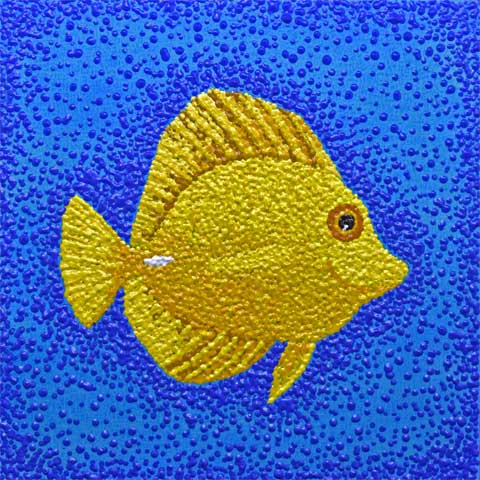
Yellow Tangs, Parrot Fish and the Reef or Lagoon Triggerfish are commonly seen in relatively close to shore.
Yellow Tang #2
Journal Entry: Fish in Art
Wealth & Manuscript
From Pacific Northwest river banks, to the ocean waters of Hawaii, fish play a significant role in mankind’s survival as a food source. Fish have provided food for survival and incredible wealth to the empires that are able to extract their riches.
The image of the fish is found throughout the pages of history, in art and literature. They have been interwoven in our myths and stories.

Ornate Butterflyfish
A fishtale of faith, myth and survival, this creature is also represented in the Zodiac. Symbolically, the fish is found in biblical stories and in various Illuminated Manuscripts. In the ‘Prayer to Saint Lawrence’ in the ‘Hours of Catherine of Cleves’ they are depicted in border devouring each other. This meant to illustrate the state of man in the absence of government and law.
Saint Augustine warned us, “Take care that in preying upon one lesser than you, you are not preyed upon by one greater than you.”


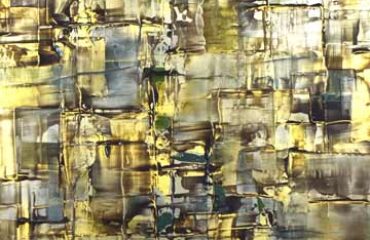

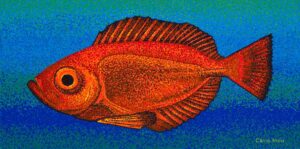



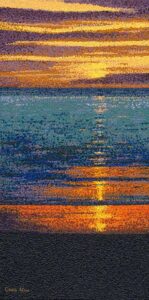
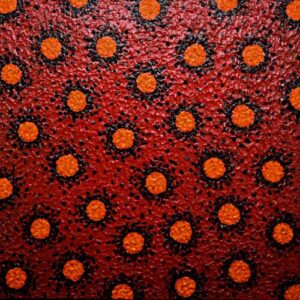
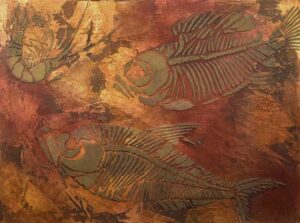




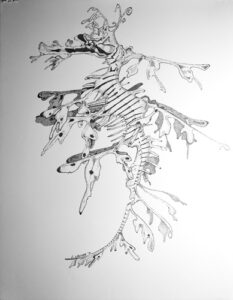
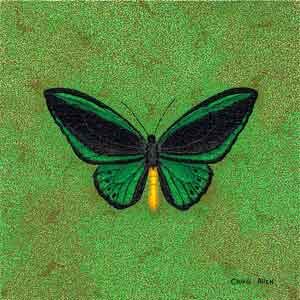
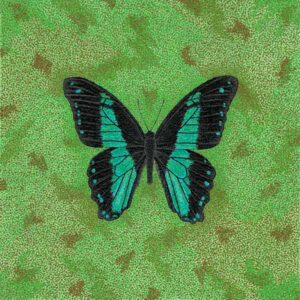
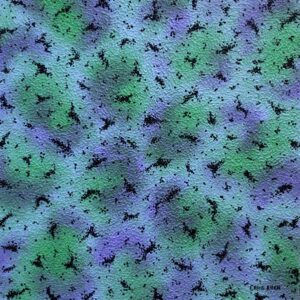

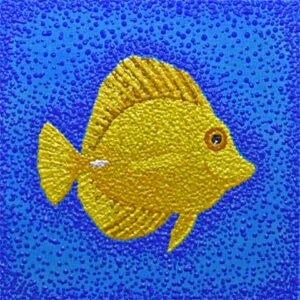
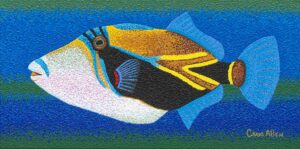
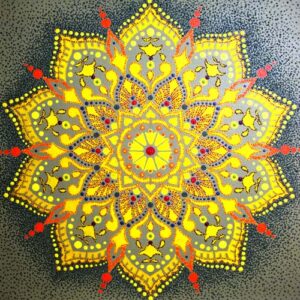
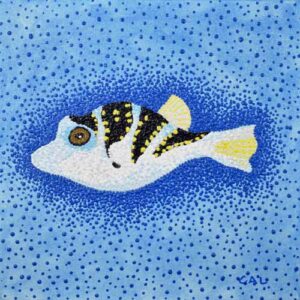
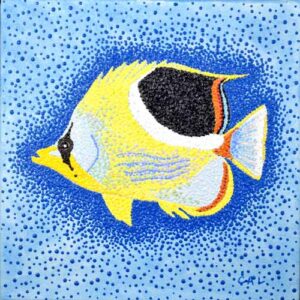
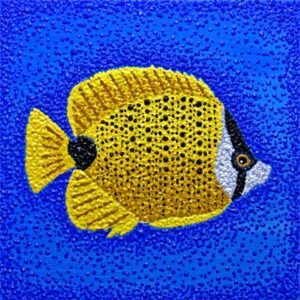
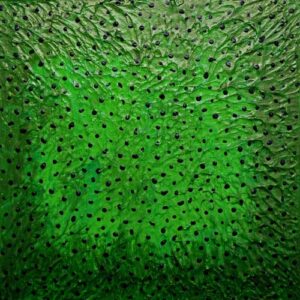

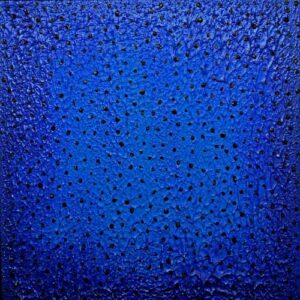
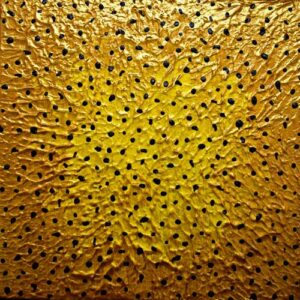
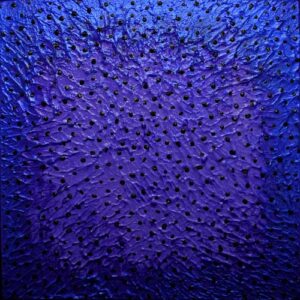
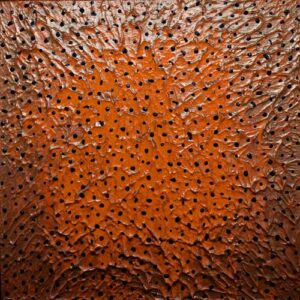


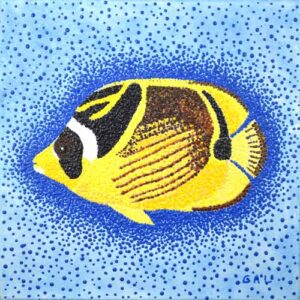
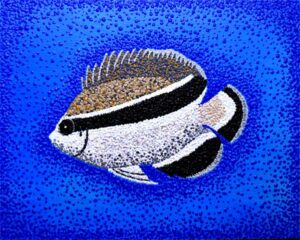

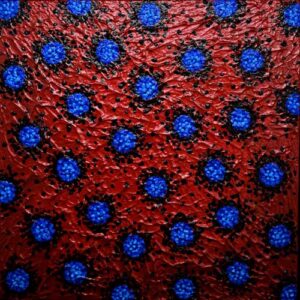
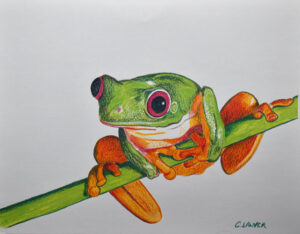


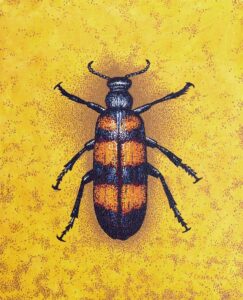

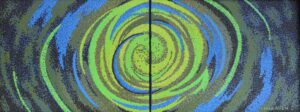
Facebook: Craig Allen Lawver Art